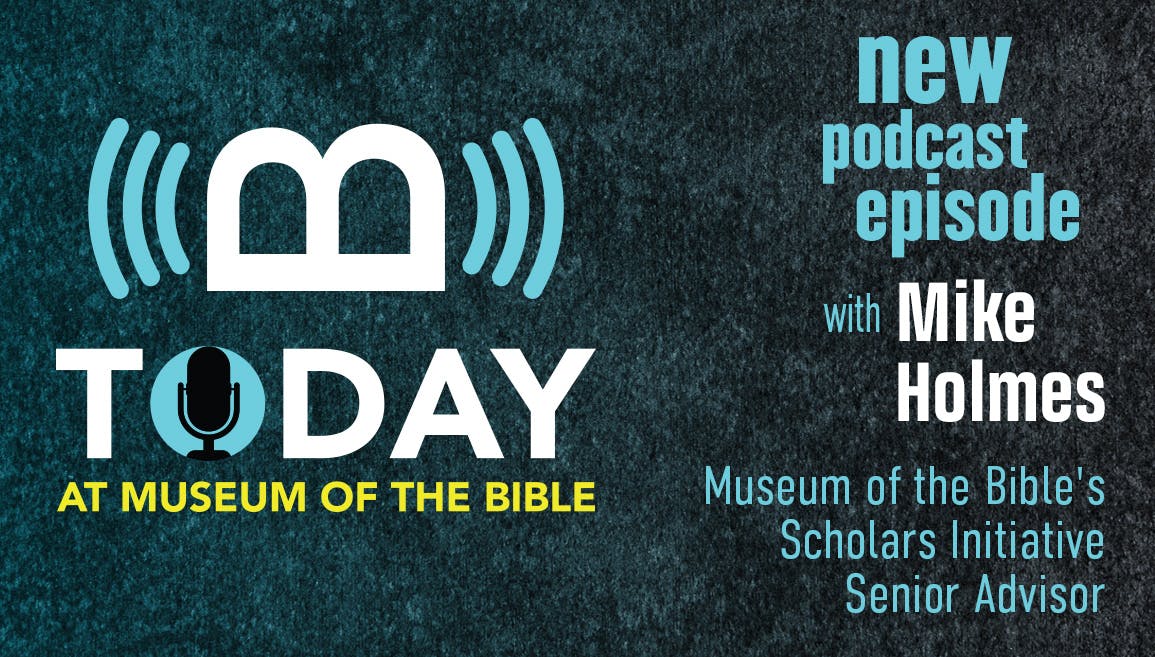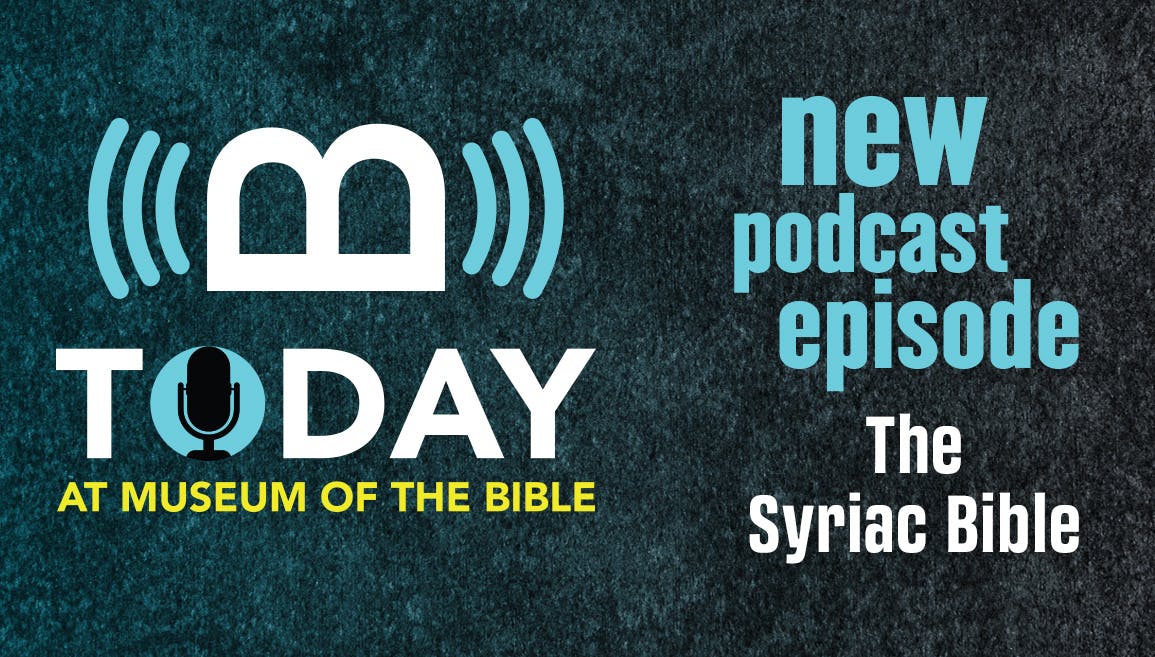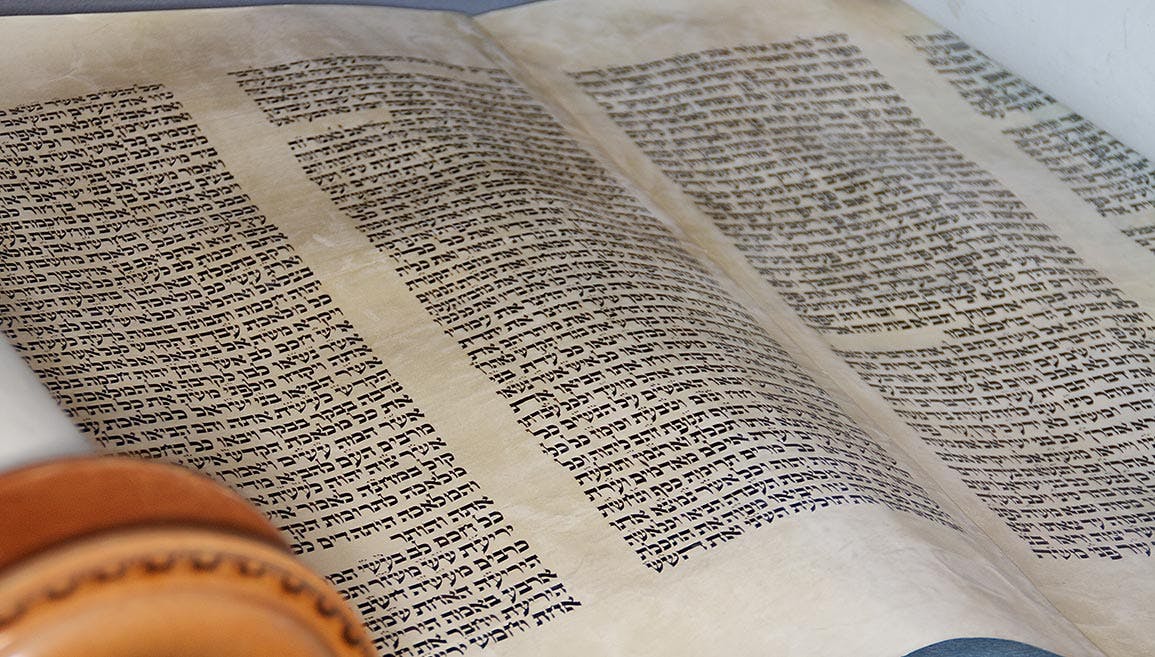Seeing the Differences in Torah Scrolls
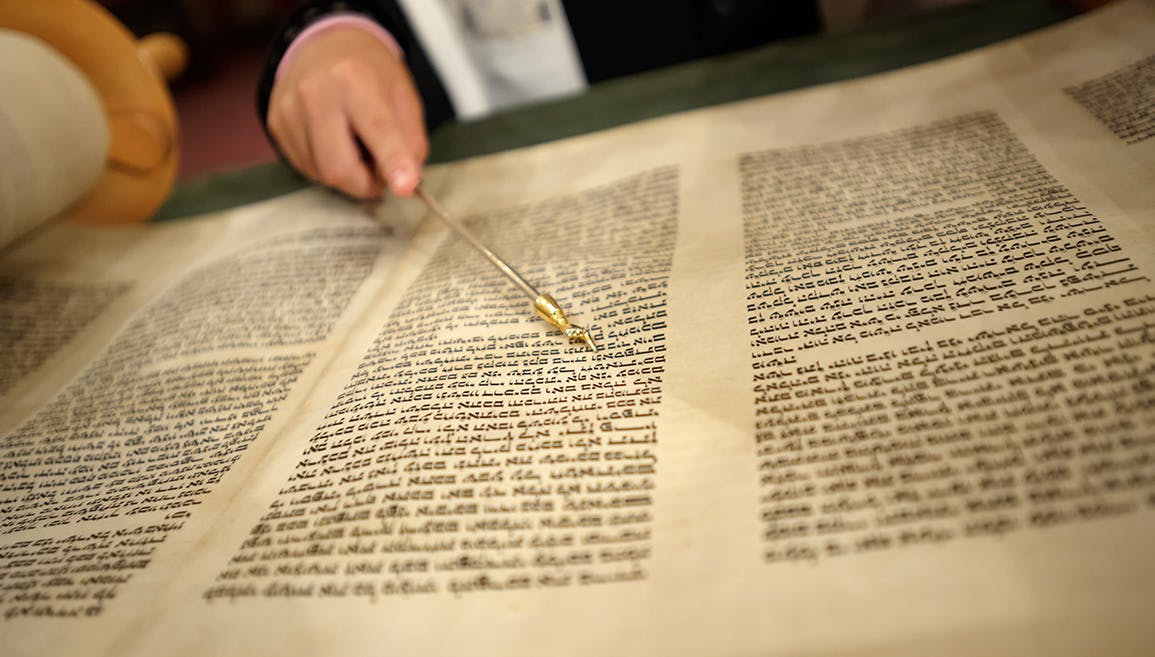
One of the most sublime and powerful scenes in the Hebrew Bible describes the revelation of the Torah on Mt. Sinai. In a moment where divine revelation overpowers the senses through thunder, lightning, and the cry of horns, the Torah is presented to the Israelites. In the Jewish tradition—though no specific date is given in the Bible—this event is commemorated during the festival of Shavuot, celebrated this year from this evening, May 25, through sunset on May 27. The Torah is the central text of Judaism, understood as a revelation received directly from God, and thus its transmission and preservation are also paramount for Jews.
In Judaism, the Hebrew word torah, literally defined as “teaching,” has a broad set of meanings. It can, for example, refer to the entire body of Jewish religious thought, from the beginnings of the Hebrew Bible up to and including the most recent writings of rabbis and religious thinkers. But in its most basic meaning it refers to the first five books (or Pentateuch) of the Hebrew Bible: Genesis, Exodus, Leviticus, Numbers, and Deuteronomy. It is this meaning of the term that is best known.
The word Torah often also refers to the liturgical Hebrew scrolls in which the text of the Torah is written. Museum of the Bible holds 1,612 such Torah Scrolls in our collection. Because all the scrolls contain the same text, one might think these would be more or less identical, but this is not so. In fact, there is a fair amount of variation between Torah Scrolls within narrow limits.
Torah Scrolls are always written on parchment made from the skin of a kosher animal. The skin is stretched, the hair removed, and then scraped and smoothed to create an even writing surface. The skin is treated with preservatives to allow it to last and to give it a more aesthetically pleasing color. However, not all parchment is the same, and this is one of the first differences between Torah Scrolls.
In the ancient world, parchment was treated with vegetable tannins, especially gall nut juice. Additionally, the skin, which is made up of two membranes, was not split but used whole. This produced a thicker, more leather-like parchment, brownish in color. The Dead Sea Scrolls are written on this type of parchment, which is known today in Hebrew as Gevil.
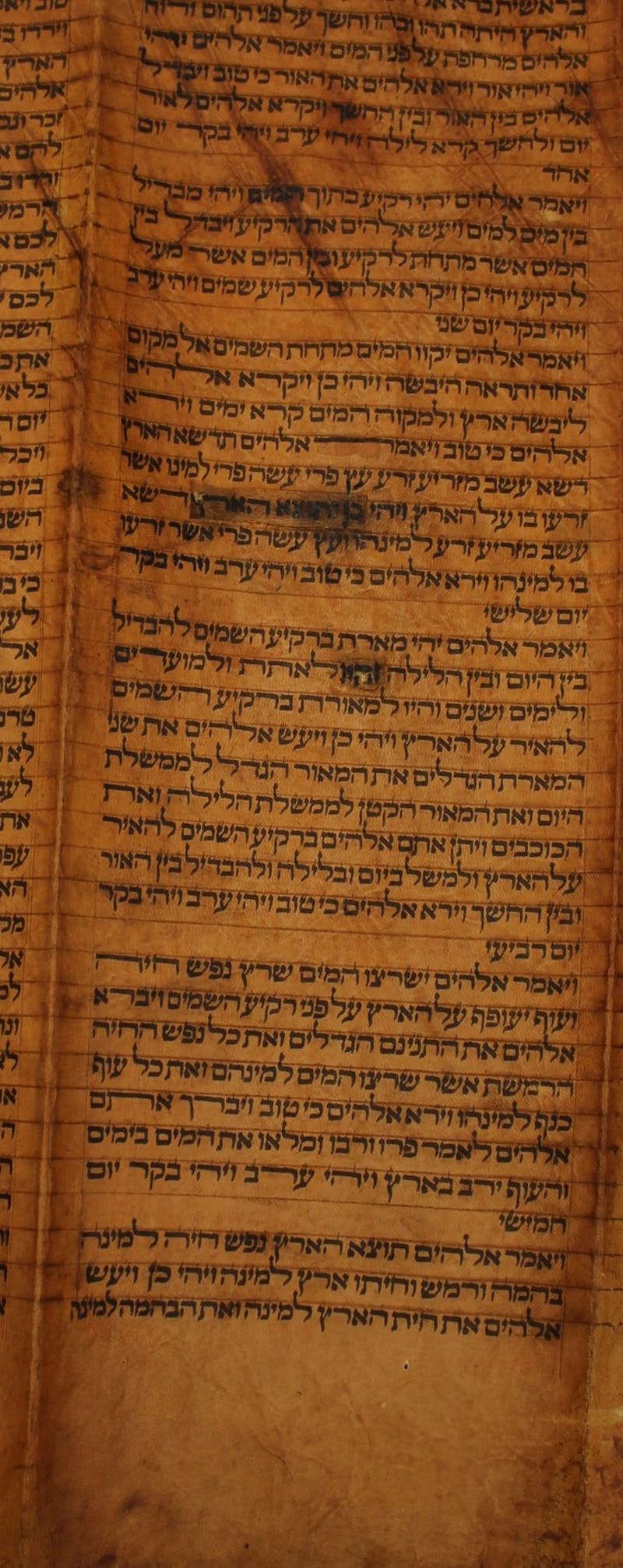
Figure 1: SCR.003720, an example of a Torah Scroll written on Gevil. Notice the dark color.
In the Middle Ages, a new type of parchment production began, which used only one of the two membranes of the animal skin, treated with lime, to allow for a much finer writing surface. In Hebrew, this type of parchment is known today as Klaf. This was initially controversial but has since been adopted by all European Jewish communities and their descendants in the US and Israel. Gevil, on the other hand, continues to be used in communities that originated in North Africa and the Middle East.
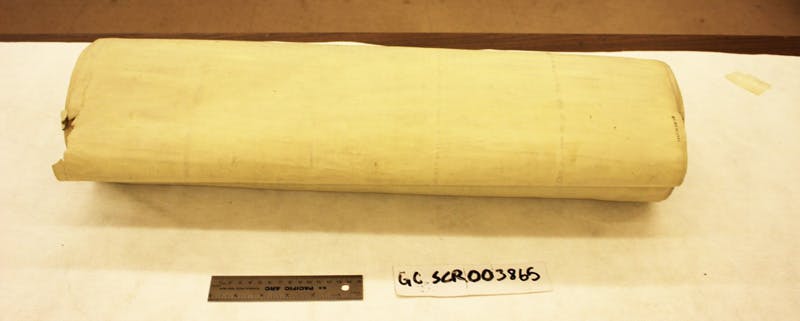
Figure 2: SCR.003865, an example of a Torah Scroll written on Klaf.
In addition to the two basic types of parchment, there are varying types of parchment treatment that might differentiate scrolls. Some communities used whitewash paint on the back surface or on both surfaces of the parchment. This was for aesthetic reasons, to create a clean, uniform color. It also made the surface smoother and easier to write on, especially if the parchment used was uneven. This treatment makes it much more difficult to repair, however, if a letter is malformed, as a scribe ends up scraping off not just the ink but also the paint, damaging the surface of the scroll.
Another way in which Torah Scrolls differ from one another is in the script. On a very basic level, every scribe has their own handwriting. However, there are also styles of script unique to particular times and places. One can tell the difference between a scroll written by a central European scribe as opposed to a North African scribe, or a Spanish scribe, or a Polish scribe. Scripts also develop over time, so a central European scroll written in 1220 will look different from one written in 1920.
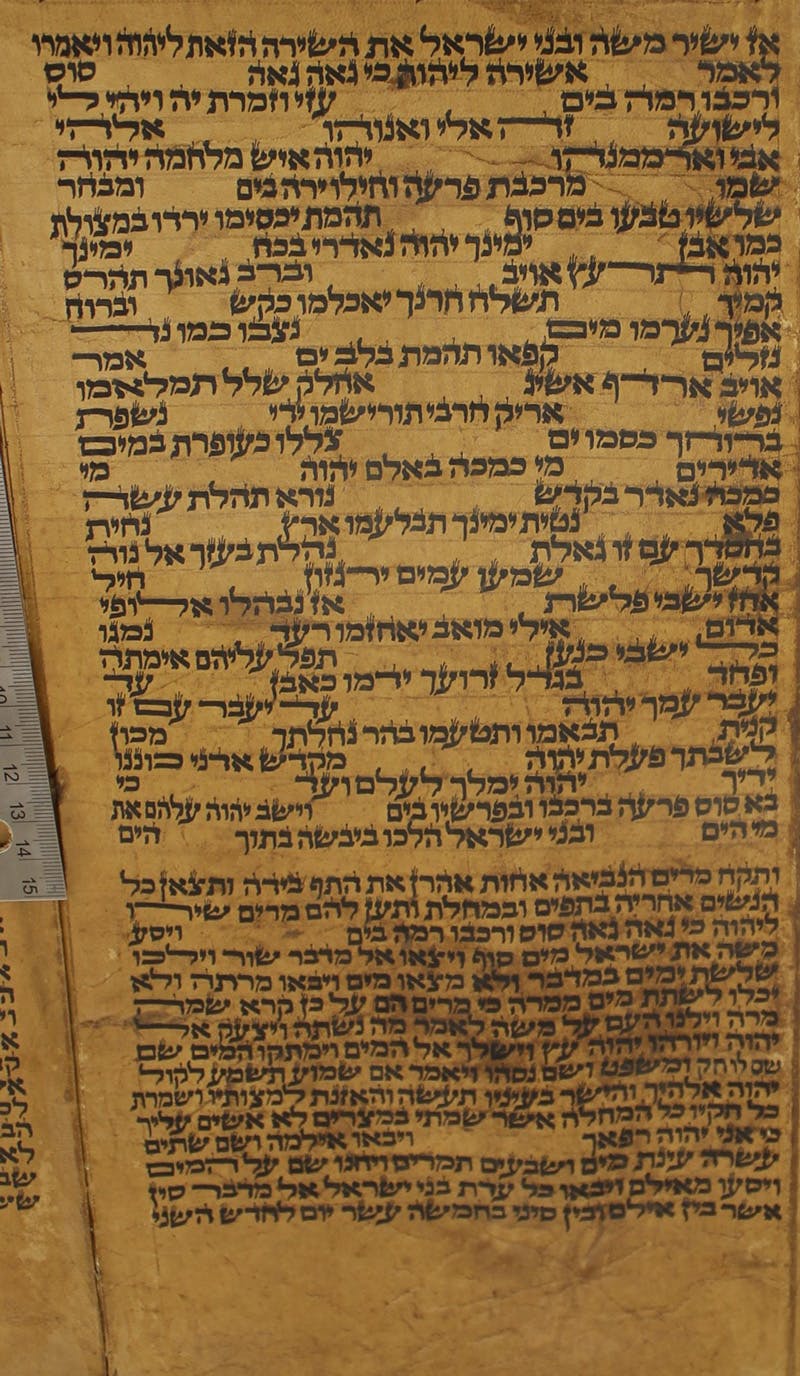
Figure 3: SCR.003873, an example of a scroll written in the script used by the descendants of Jews who were expelled from Spain in 1492, known as Sephardic Jews.
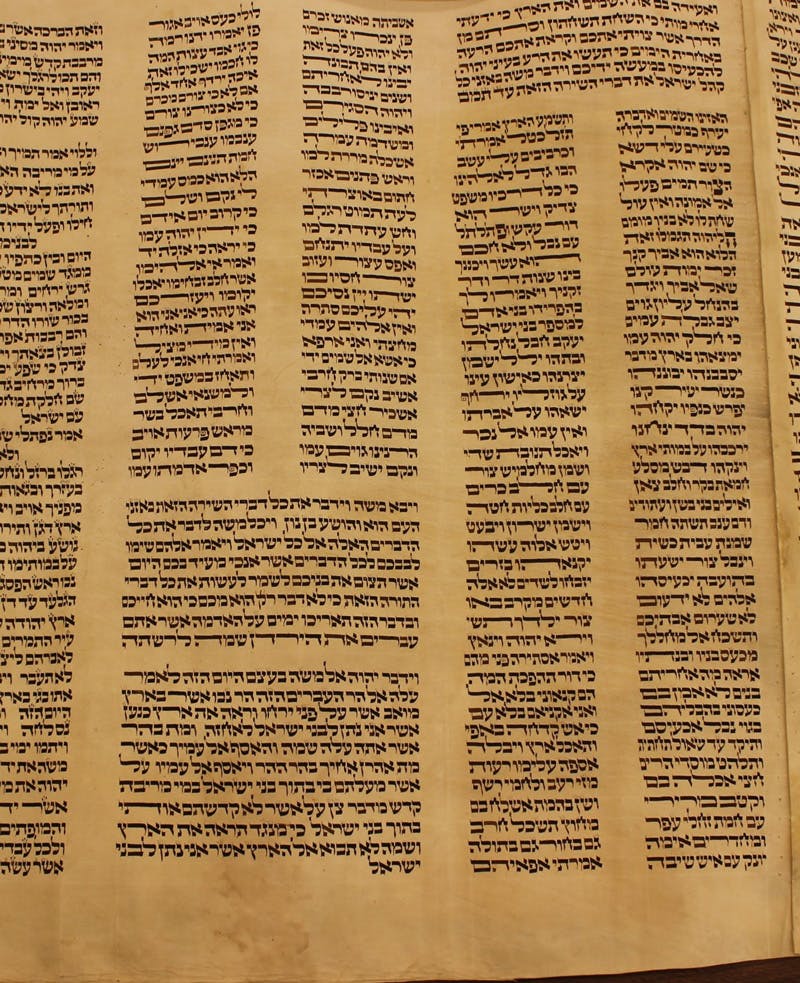
Figure 4: SCR.003756, an example of scroll written in the script of the Jews of Central and Eastern Europe, known as Ashkenazic Jews.
There are also decorative elements incorporated in a number of the letters of a Torah Scroll, especially the seven letters שעטנז גץ. These decorative elements are called tagin. Most Torah Scrolls have them, but a small number, which are either very old or from specific communities, do not. These tagin can be embellished in order to create elaborate decoration, which is sometimes done to indicate a special interpretation of a word. In addition, there are many letters written in decorative forms for the same reason. There are a number of lists discussing which letters should be decorated dating back to late antiquity. The earliest, known as sefer tagin, the "Book of Tagin," probably originated in Babylonia in the eighth century. The lists are not consistent, and the decorative letters found are not usually consistent with any given list. These are one of the most striking features of scribal art and creativity in Torah Scrolls.

Figure 5: An example of the special letter, known as Peh lefufah, the spiral peh, in SCR.003756. The letter circled on green on the left is a normal peh, and the one on the right is the special spiral peh. You can see the decorative spiral in the center of the letter.
In addition to the materials from which the scrolls are made and the way the letters are written, there is also a certain amount of variety in the layout. In a previous article, I wrote about variations in the “Song of the Sea,” but there are additional ways in which scroll layouts vary. Torah Scrolls do not mark chapter and verse but are instead divided into sections called parshiyot (parasha in the singular). There are two types of parshiyot: open and closed. Open parshiyot begin at the start of a line. Closed parshiyot begin in the middle of a line, and must have a space at least as large as nine letters between the beginning and the end of the previous parasha. There is disagreement about the placement of these sections, which can lead to variant layouts. For example, there is a disagreement about whether there should be a new parasha in the middle of Exodus 20:17, the commandment not to covet. Today, it is typical for Torah Scrolls, and other texts of the Hebrew Bible, to have a new parasha there, but historically some scribes wrote this passage without one. This reflects a difference of interpretation: Is not coveting your neighbor’s house a different commandment from not coveting his wife, livestock, and property, or are they all one commandment? In addition, even when there is universal agreement about the placement of the section breaks, layouts can vary due to the overall placement of words and spaces in the text. Some scribes focus on carefully aligning their spacing in order to create aesthetically pleasing arrangements. This is one of the limited ways scribes are able to express their artistic sense in the writing of a Torah scroll.
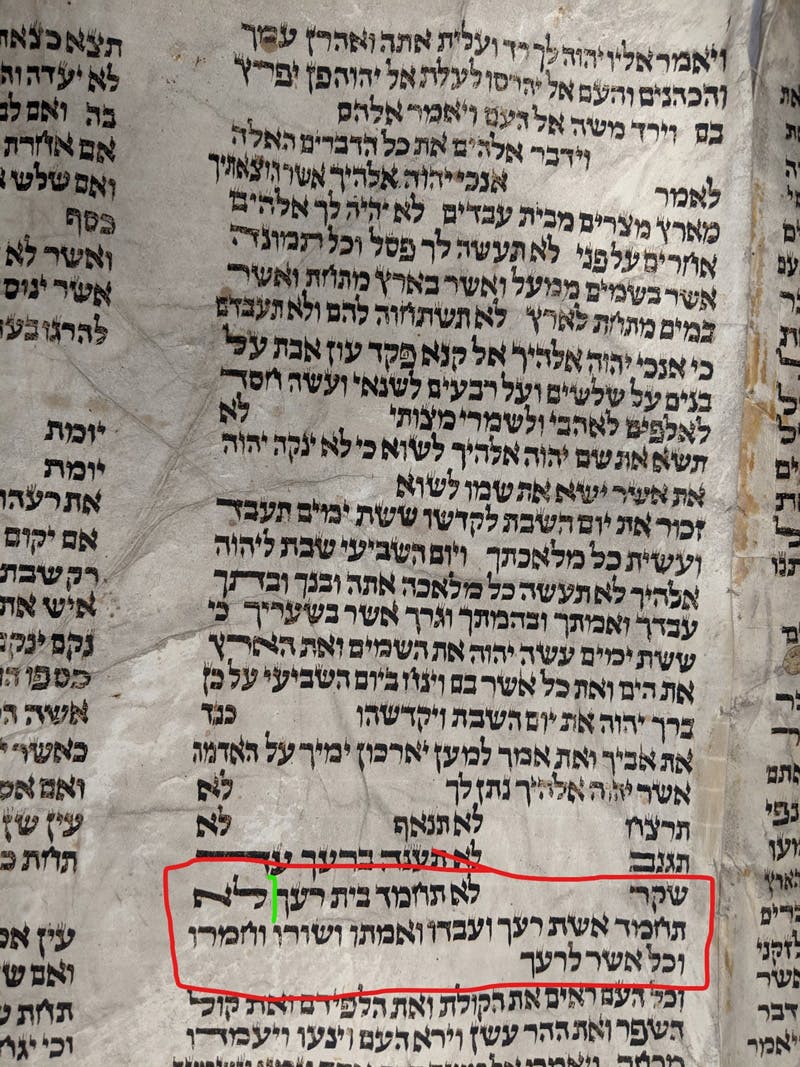
Figure 6: Example of Exodus 20:17 without a closed parasha in the middle. The verse is circled in red and the green line indicates where one would usually find the space indicating a new section.

Figure 7: Leviticus 18:7–17 is a series of short verses all beginning with the same word, each verse its own closed parasha. In this scroll the scribe carefully arranged the layout so it would create a neat step pattern for aesthetic reasons.
There is also long-standing debate about whether certain differences in spelling render a Torah Scroll incorrect, and thus not fit for use. Historically, Hebrew was not generally written with vowels. Eventually, vowel symbols were introduced, but these are still not included in Torah scrolls. Instead, certain consonants can represent vowel sounds in place of their consonantal values. Spelling in the ancient world was not regular, and so those consonants, known as matres lectiones in Latin, or imahot keriah in Hebrew, were sometimes included in words and sometimes not.
In the Babylonian Talmud (Tractate Kidushin 30a), there is a conversation about the location of the middle of the Torah as determined by the number of letters. It was suggested a Torah Scroll be brought out so they could count from the beginning and end in order to find the middle. This was rejected, however, because though in the past there were experts who knew which words included the matres lectiones, that was no longer the case, and therefore there was variation between Torah Scrolls. Since no two scrolls would have exactly the same number of letters, there would therefore be no way to determine the middle of the Torah. By the Middle Ages, however, there were some rabbis, such as Maimonides, who maintained the correct spellings were known and a Torah Scroll must have the correct spelling to be fit for liturgical use. Others, such as R. Jacob Tam, maintained the position of the Talmud and lamented that the variation in spelling was an inevitable result of this loss of knowledge. Though most of these spellings have been standardized in the centuries since, it is nevertheless possible to find variations in spelling across Torah Scrolls, especially older Torah Scrolls.
Outside of these spelling variations, which have no impact on the semantic meaning of the text (though they can matter to mystical interpretation), there are also two words about which there is some debate beyond just the matres lectiones. The first is in Genesis 9:29. In the texts most popularly used today, the first word is ויהי, “It was . . .” However, some Torah Scrolls today—mostly in the Yemenite tradition, but historically more broadly distributed—have one additional letter at the end ,ויהיו, which turns it plural: “They were.” In Deuteronomy 23:2 (23:1 in Christian Bibles), most scrolls today, aside from those written in the Yemenite tradition, have דכה, with the letter heh. But Yemenite scrolls, and scrolls written in central and eastern Europe before about 1800, have the letter aleph at the end instead. In both cases the word means “crushed.”

Figure 8: In this image from SCR.000566, you can see how the word Daka was cut out and replaced. Here it is spelled with a heh, and it was likely replaced because the original was spelled with an aleph, though we cannot know for certain.
These are just some of the variations that exist in Torah Scrolls. As a part of the Museum of the Bible Torah Scroll Project, we are cataloging these differences and more in the scrolls in our collection. We invite you to visit the database and see some of them for yourself. These differences come into focus during Shavuot, when they show the diversity and creativity in Torah Scrolls written by Jewish communities across time and space, even as these communities are united in writing the same Torah.
By Dr. Jesse Abelman, Curator of Hebraica and Judaica
